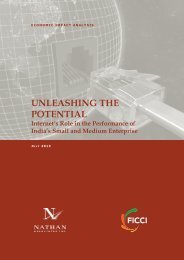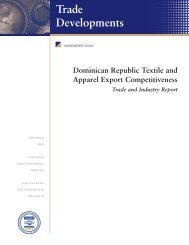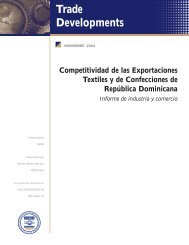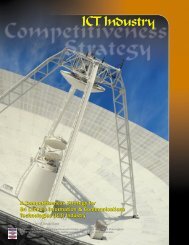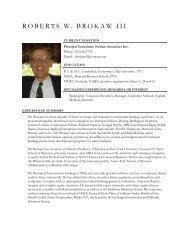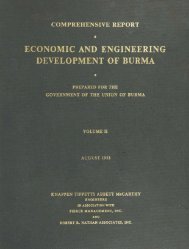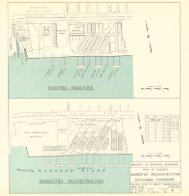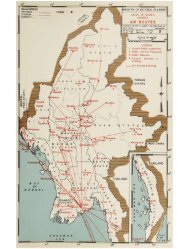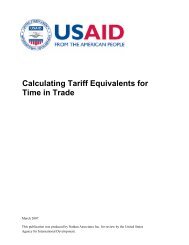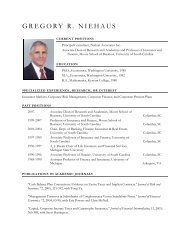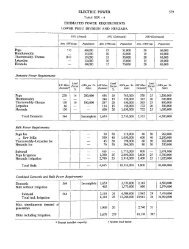Putting it to Work in Developing Countries - Nathan Associates
Putting it to Work in Developing Countries - Nathan Associates
Putting it to Work in Developing Countries - Nathan Associates
You also want an ePaper? Increase the reach of your titles
YUMPU automatically turns print PDFs into web optimized ePapers that Google loves.
S<strong>in</strong>gapore’s Rise and FDI<br />
Throughout the world, S<strong>in</strong>gapore is regarded<br />
as a major economic success. In the past<br />
40 years the c<strong>it</strong>y-state has transformed <strong>it</strong>self<br />
from a develop<strong>in</strong>g country <strong>to</strong> a high <strong>in</strong>come<br />
one, and a world-class bus<strong>in</strong>ess center.<br />
Attract<strong>in</strong>g FDI has been one key <strong>to</strong> <strong>it</strong>s success—annual<br />
FDI <strong>in</strong>flows were about $90<br />
million <strong>in</strong> 1970, but are $20.1 billion<br />
<strong>to</strong>day. By harness<strong>in</strong>g the technological and<br />
bus<strong>in</strong>ess power of mult<strong>in</strong>ational enterprise<br />
associated w<strong>it</strong>h these flows, S<strong>in</strong>gapore<br />
moved rapidly from a labor-<strong>in</strong>tensive economy<br />
<strong>to</strong> one <strong>in</strong>creas<strong>in</strong>gly based on knowledge<br />
and technology. Its Local Industry<br />
Upgrad<strong>in</strong>g Program, Skills Development<br />
Fund, and schemes <strong>to</strong> encourage local<br />
research and development by mult<strong>in</strong>ational<br />
companies have all been highly effective <strong>in</strong><br />
this regard. All of these <strong>in</strong><strong>it</strong>iatives build on<br />
S<strong>in</strong>gapore’s excellent systems of basic education<br />
and worker tra<strong>in</strong><strong>in</strong>g. In maximiz<strong>in</strong>g the<br />
impacts of FDI, S<strong>in</strong>gapore has adopted a<br />
carefully managed <strong>in</strong>dustrial policy that<br />
rests on five prerequis<strong>it</strong>es: (1) an open economy<br />
that imposes market discipl<strong>in</strong>e; (2)<br />
excellent <strong>in</strong>frastructure and a predictable,<br />
bus<strong>in</strong>ess-friendly <strong>in</strong>vestment climate; (3) an<br />
open labor market; (4) a high-qual<strong>it</strong>y professional<br />
civil service; and (5) mer<strong>it</strong>ocratic,<br />
results-oriented government, able <strong>to</strong> rapidly<br />
recover from and correct <strong>it</strong>s mistakes. See<br />
Asian Development Bank, Asian<br />
Development Outlook 2004, Part 3 Foreign<br />
Direct Investment <strong>in</strong> Develop<strong>in</strong>g Asia, pp.<br />
230–231.<br />
enterprise <strong>to</strong> merge w<strong>it</strong>h or acquire an exist<strong>in</strong>g<br />
company <strong>in</strong> a foreign location. Over the years<br />
2003–2005, cross-border M&A accounted for<br />
about two-thirds of the world’s FDI flows (Table<br />
1-2). The rema<strong>in</strong><strong>in</strong>g third consisted of greenfield<br />
FDI as well as other follow-up FDI flows, such<br />
as re<strong>in</strong>vested earn<strong>in</strong>gs and <strong>in</strong>tracompany loans<br />
(see below). 7 This global average hides considerable<br />
year-<strong>to</strong>-year variabil<strong>it</strong>y <strong>in</strong> cross-border<br />
M&A. It also masks a strik<strong>in</strong>g difference <strong>in</strong> the<br />
relative portions of M&A versus greenfield and<br />
other flows <strong>in</strong> the develop<strong>in</strong>g and developed<br />
worlds. M&As consistently make up by far the<br />
greatest share of FDI flows <strong>in</strong> developed countries<br />
as a group, but greenfield FDI dom<strong>in</strong>ates<br />
<strong>in</strong> develop<strong>in</strong>g countries (Figure 1-3).<br />
In<strong>it</strong>ially at least, the two types of FDI may have<br />
dist<strong>in</strong>ct impacts <strong>in</strong> host economies: greenfield<br />
<strong>in</strong>vestments add immediately <strong>to</strong> cap<strong>it</strong>al s<strong>to</strong>ck<br />
and employment, while cross-border M&A<br />
br<strong>in</strong>gs ownership change but not necessarily<br />
near-term expansion <strong>in</strong> productive capac<strong>it</strong>y.<br />
UNCTAD research suggests, however, that their<br />
relative effects differ l<strong>it</strong>tle over time. 8 Both tend<br />
<strong>to</strong> generate follow-on <strong>in</strong>vestments, as well as<br />
potential technology and knowledge transfers for<br />
the host economies.<br />
One new trend <strong>in</strong> cross-border M&A activ<strong>it</strong>y is<br />
the <strong>in</strong>volvement of private equ<strong>it</strong>y funds based <strong>in</strong><br />
the Un<strong>it</strong>ed States and the Un<strong>it</strong>ed K<strong>in</strong>gdom, as<br />
well as Hong Kong and the Middle East. 9<br />
Compared <strong>to</strong> mult<strong>in</strong>ational corporations, the<br />
trad<strong>it</strong>ional sources of FDI, private equ<strong>it</strong>y funds<br />
have shorter time horizons for their <strong>in</strong>vestments<br />
(e.g., five <strong>to</strong> six years), and are more concerned<br />
w<strong>it</strong>h generat<strong>in</strong>g near-term returns for shareholders<br />
than w<strong>it</strong>h develop<strong>in</strong>g global production or<br />
distribution networks. Consequently, their<br />
impact on the nature and growth of cross-border<br />
M&A transactions <strong>in</strong> develop<strong>in</strong>g countries and<br />
FDI <strong>in</strong> general, while still uncerta<strong>in</strong>, may be different<br />
than that of mult<strong>in</strong>ational corporations.<br />
6



